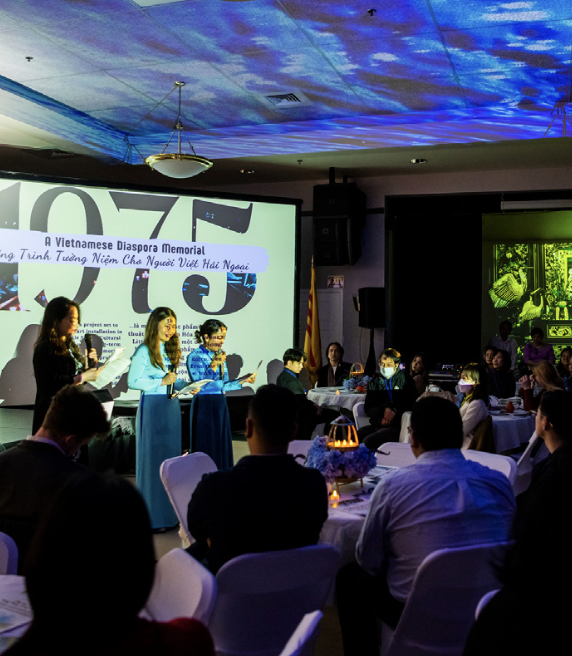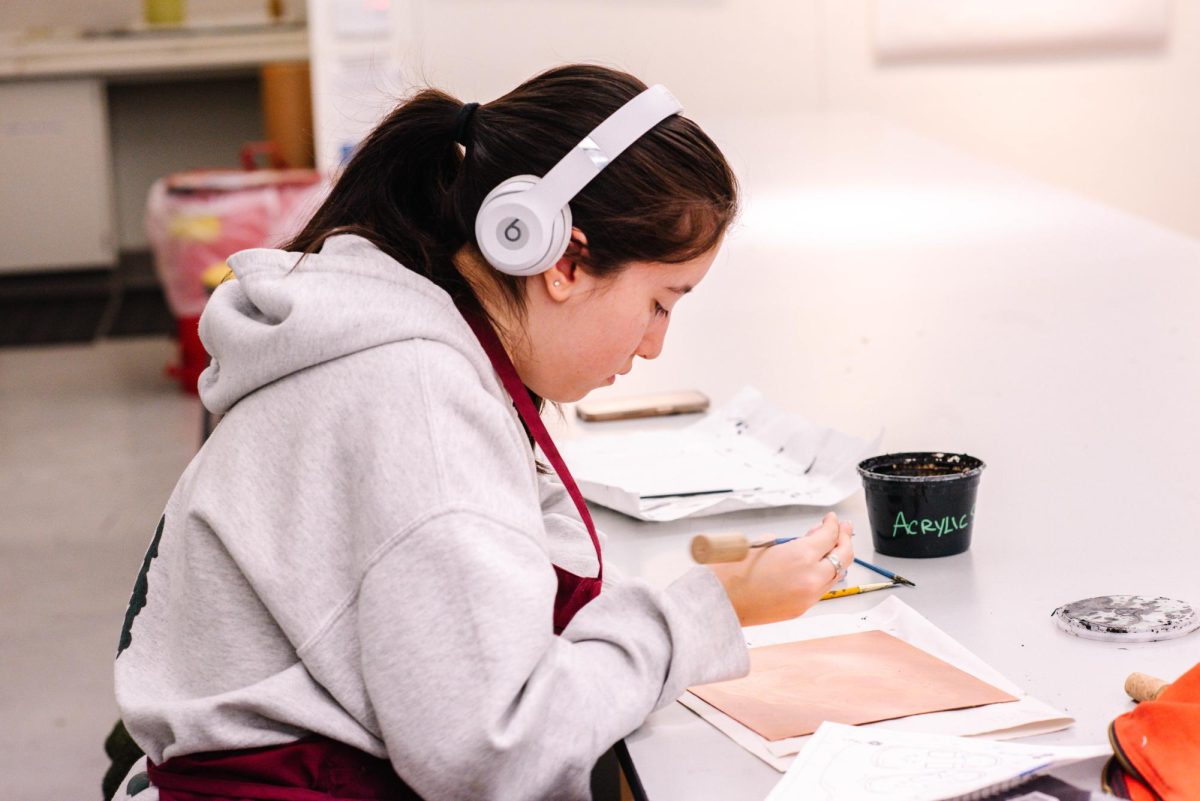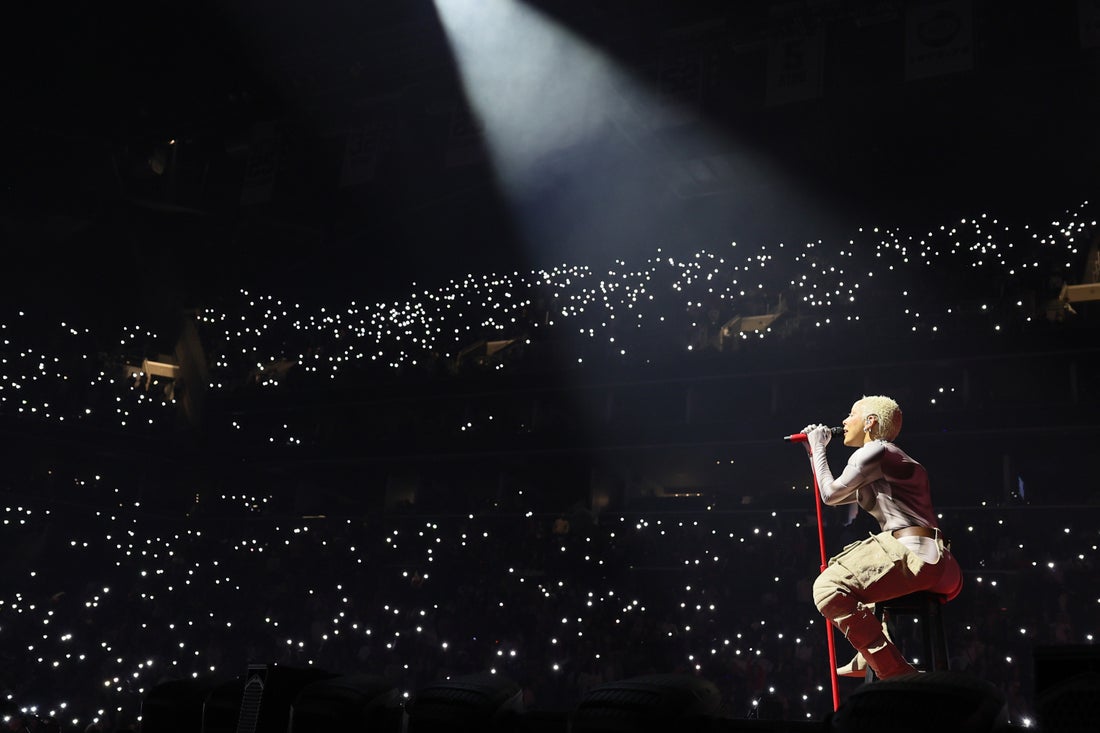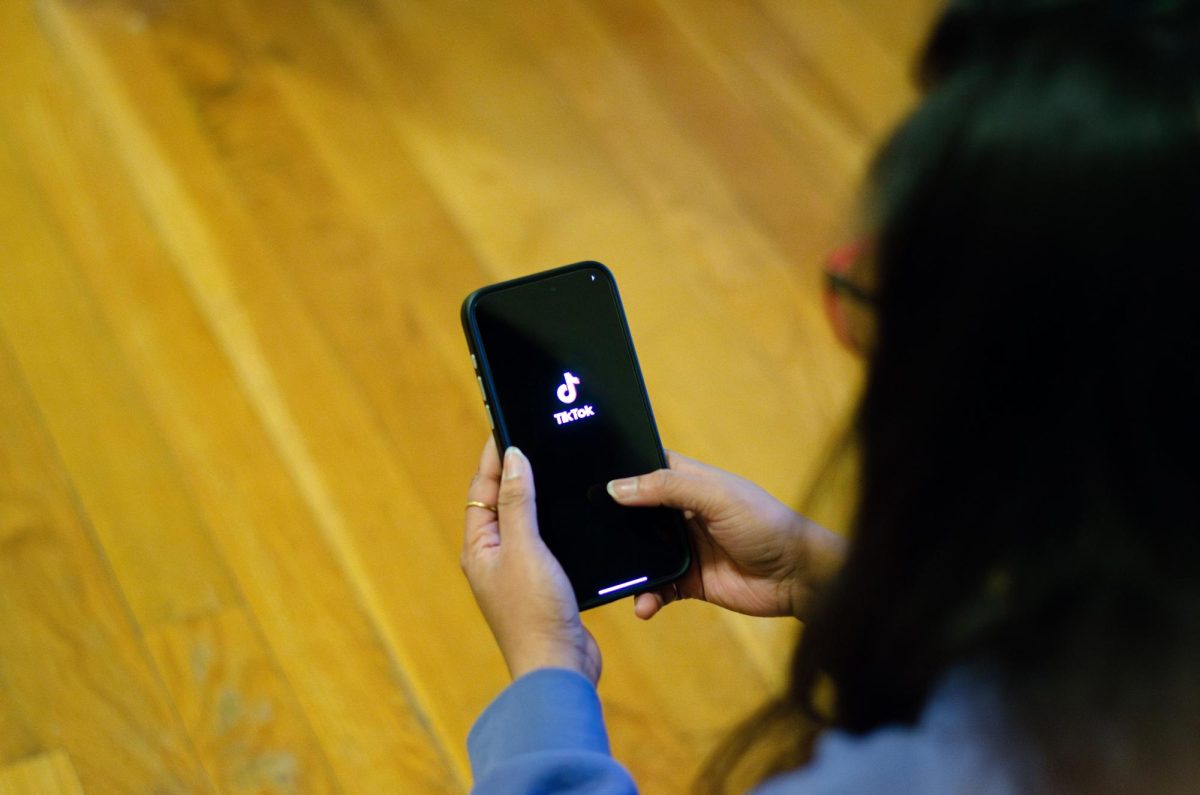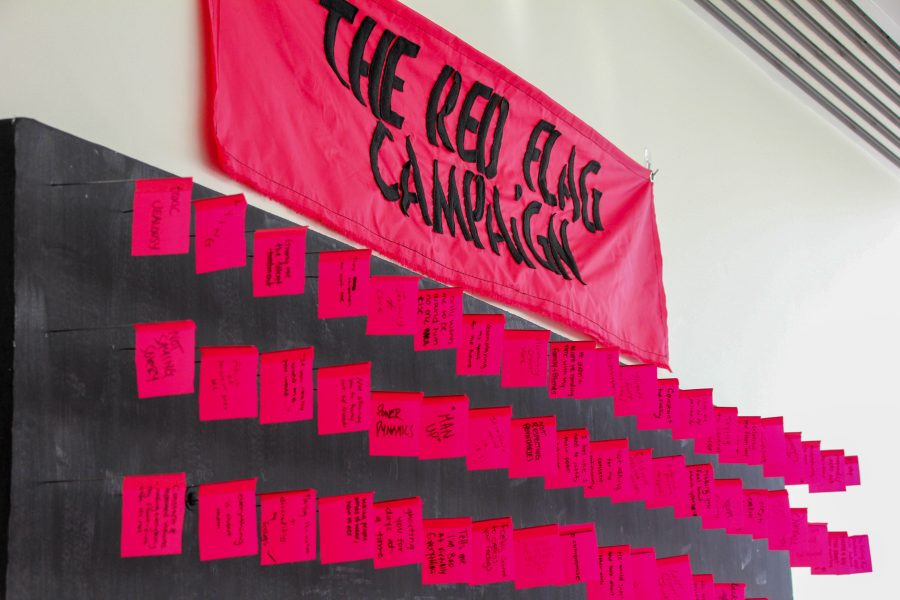The Red Flag Campaign is a campaign to raise awareness of domestic abuse and domestic violence in the everyday lives of people. On the first floor Campus Center Terrace on the wall directly next to the entrance hallway to the dining hall is a black and red art piece. Small red flags hang off of a black board. On each of those small red flags are messages, or “Red Flags,” about domestic abuse. Gillian Benoit, the Program Assistant for Community Engagement in the Office of Student Leadership and Community Engagement, and Mary Raboy, the artist of the project, created the art installation as part of the Red Flag Campaign that raises awareness for domestic violence and abuse.
“The Red Flag Campaign is actually a national organization that employs the bystander effect to really compel people to understand the prevalence of domestic violence and what that looks like in their everyday lives and the institutions that they interact with. So, in bringing that to UMass Boston through the Office of Student Leadership and Community Engagement and also with University Health Services, we wanted to bring the Red Flag Campaign and ask UMass Boston community members to fill out the actual red flags” stated Gillian Benoit, when asked what the Red Flag Campaign was. Benoit wanted students at UMass Boston to fill out the red flags with what they believed were indicators of violence and abuse.
When Benoit and Raboy were asked why they got involved with the Red Flag Campaign and the idea behind the art installation, the two stated that they had a strong connection to the campaign. Raboy stated, “For me personally, I myself have had my own share of domestic violence in my life and in my family, and communicating this sort of thing just, personally, was really invaluable to me. As well as, pursuing the kind of communication with other people where they could have a platform to talk about something of this nature.” Benoit stated, “For me, I have people close in my life that have experienced domestic violence in their homes, in their partner relationships and stuff, and so I wanted to be able to take the time and energy to empower them and to collect these stories in such a way where it was meaningful and it carried purpose behind it.”
Benoit went on to state that the two wanted to bring a voice to those whose voices are not always represented in cases of domestic violence and abuse. “We wanted to bring another perspective to the campaign because often times cis-gendered women are at the forefront of what domestic violence looks like and that’s not the case and we wanted to break down that characteristic of domestic violence and bring awareness to the fact that men are involved in these conversations. Like how does domestic violence look in the LGBT+ community?” Some of the flags hanging on the installation support what Benoit and Raboy are trying to convey through the campaign. “They didn’t use my pronouns,” “They didn’t respect my transition,” “SHE hit me.”
Raboy expressed how artwork is a super huge platform and how being able to create something as a community out of something “that generally has such a negative cloud” is moving and powerful because “we can create and find togetherness in something like this.” The idea behind the art installation itself was to take a space that saw a lot of foot traffic and would stand out and display the red flags. Benoit and Raboy expressed the difficulty of figuring out how to display the flags in a way that would catch attention. Rabor stated that, “It demands attention and it demands to be seen because it stands against a whole white room and a white wall, and I think we used such stark colors such as black and red, which do generally have serious connotations, brings peoples attention to something that we wanted to have attention.” The two felt that the space they chose to display the art installation would bring attention due to its size and location in the Campus Center. “It absolutely is like in the epicenter of campus a little bit and just having that dynamic and constant flow was definitely very appealing to deciding it having it there versus anywhere else” stated Mary Raboy.
The Red Flag Campaign is not the only form of awareness for domestic violence and abuse. On Friday, Nov. 8 from 6–8 p.m. in the Harbor Event Space, OSLCE is holding “Take Back the Mic,” an open mic event where students who have personal experience and who do not have personal experience can share their stories. The event takes place the same the art installation is to be taken down. Benoit expressed that the title of the event was intentional, “Microphone insinuates voice and perspective and so those were some of things that, along with autonomy, are often lost in situations of domestic violence.” The idea, according to Benoit, is to create a space of collective healing and empowerment where individuals can come together and talk about the issue. Besides “Take Back the Mic,” OSLCE is also engaging with a fundraiser called Casa Myrna, a non-profit organization in Boston that does a lot of work with connecting individuals who are victims of domestic violence with resources and support. OSLCE is selling stickers with the phrase “Love Should Not Hurt” displayed in varying languages for $2 and all proceeds will go towards Casa Myrna.
As October is Domestic Violence Awareness Month, Benoit and Raboy hope that their installation will get people to stop and look. There are also brochures for the National Domestic Violence Hotline displayed next to the art installation. If you or a loved one is suffering from domestic violence, please contact the National Domestic Violence Hotline.




